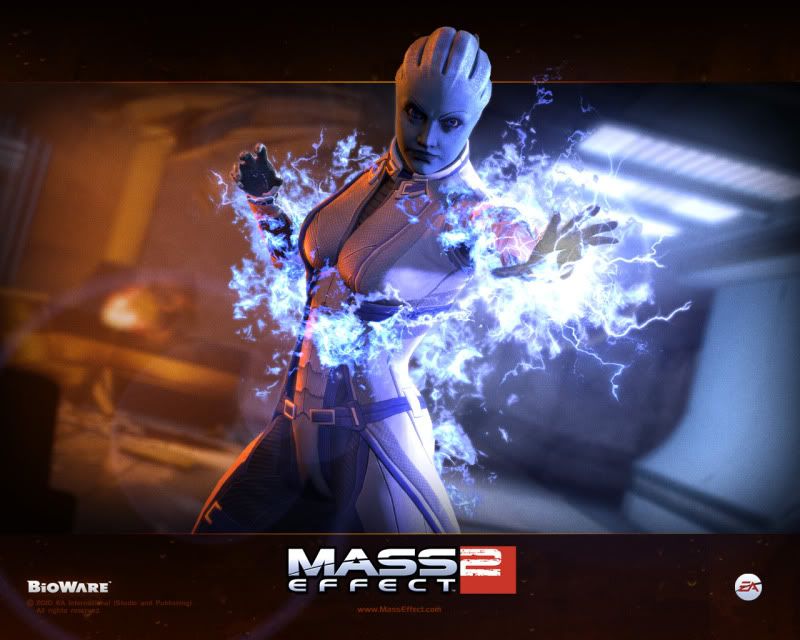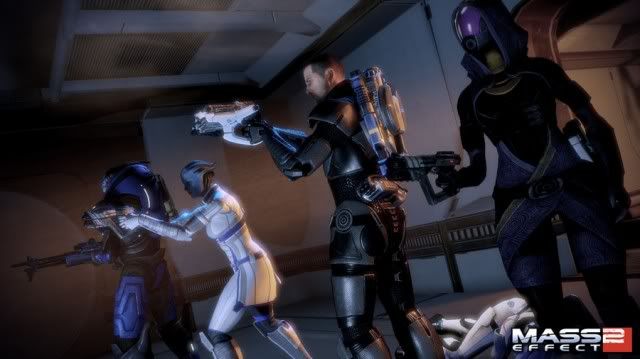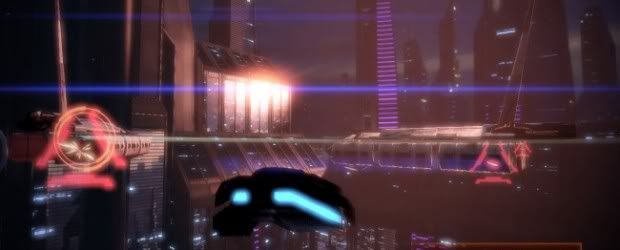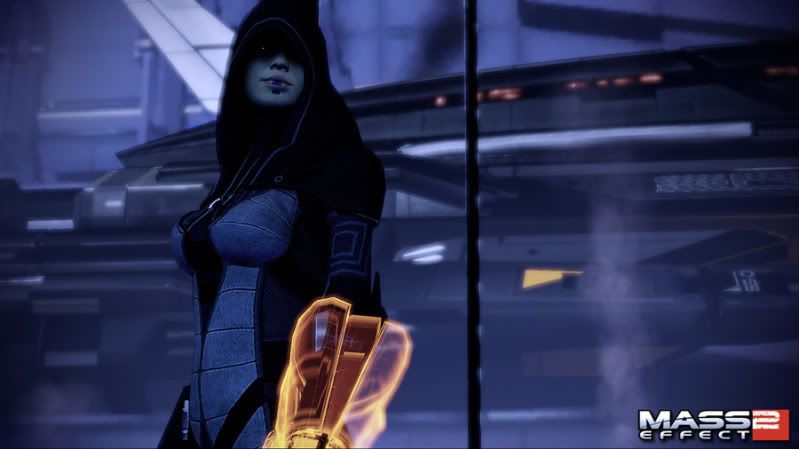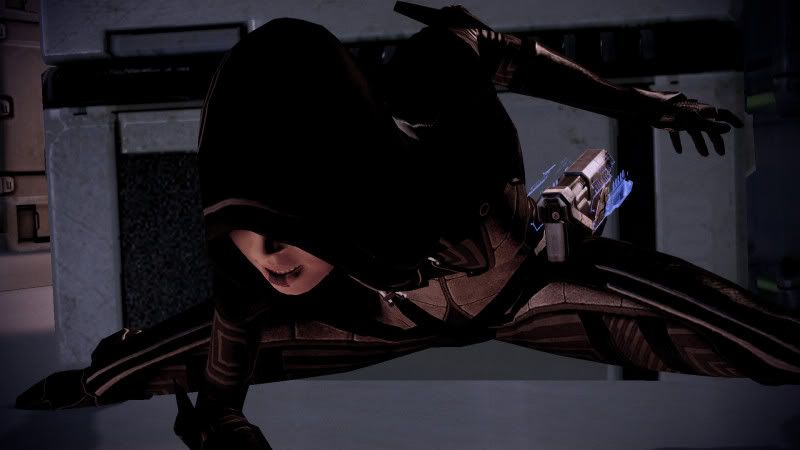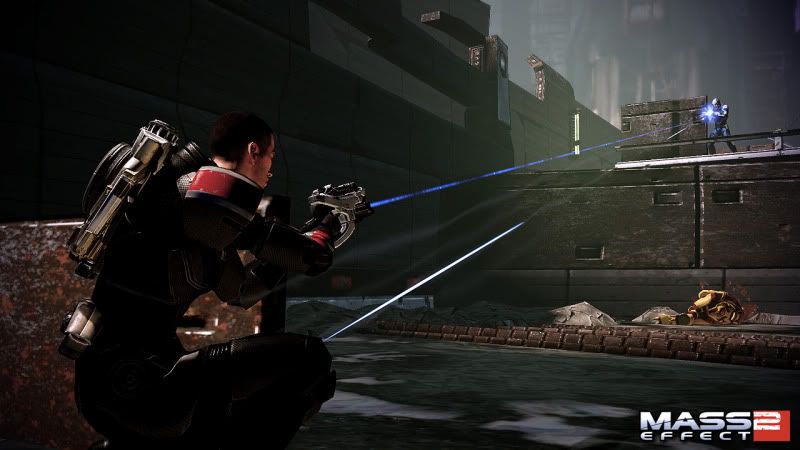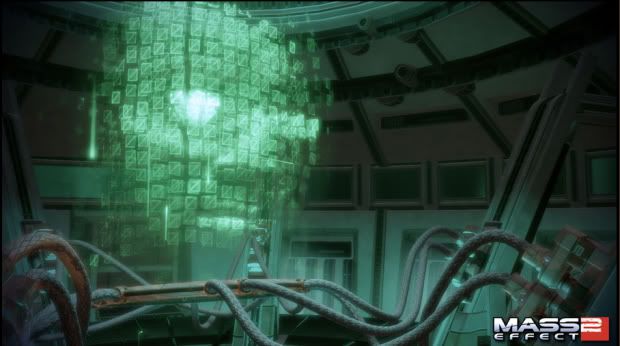
Like an interplanetary Paul Revere, Commander Shepard has been moving from system to system, race to race, all but screaming “The Reapers are coming, the Reapers are coming!” His warnings have largely gone unheeded. Giant intergalactic Lovecraftian space-horrors? Pshaw! here’s politics and racism to worry about. Even Cerberus puts the occasional science project gone wrong ahead of preparation for the Reaper’s invasion. But Shepard never really liked those guys anyway…
Two large, mission-oriented DLC packs had gone unplayed on my X-Box until recently. They couldn’t be more different. Overlord has almost nothing to do with the overarching plot of the three Mass Effect games, while Arrival is meant to bridge the second and third games together. I did play through both of them, and it’s worth noting that some points of truly challenging combat I encountered might have been due to me doing so with the difficulty set to Insanity.
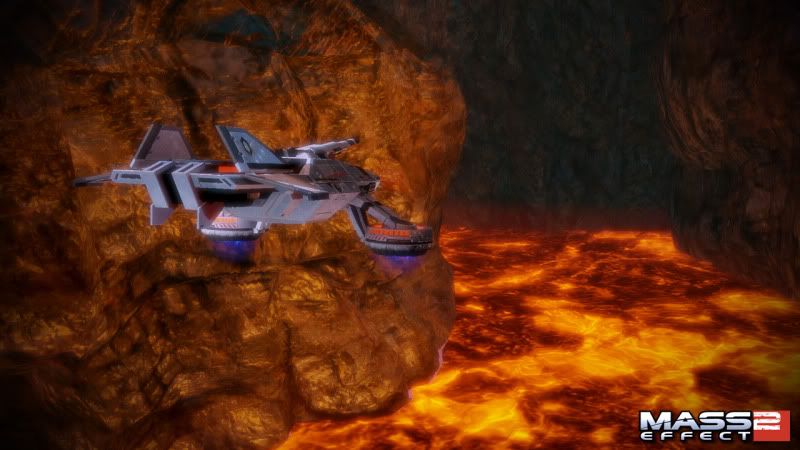
Overlord seems to be set before the end of Mass Effect 2‘s campaign. One of Cerberus’ projects has gone awry, and the Illusive Man has tapped Commander Shepard and his team to get the science team back in communication and on schedule. All Shepard is told is that the scientists assigned to the project were pushing the boundaries of virtual intelligence (VI) technology. The remote facility is divided among several stations on the planet’s surface, requiring the use of an overland vehicle to reach them all. Thankfully, the Normandy is equipped with a cutting-edge hovertank well-designed to handle anything a hostile planet can throw at it: the Hammerhead.
If you didn’t bother getting the Firewalker DLC pack, or weren’t able to access it due to not being part of the Cerberus network, now’s your chance to see just how much BioWare improved in vehicle section handling since the first Mass Effect. That is to say, “a little.” The controls of the Hammerhead are still finicky, with the added third dimension of jumping making maneuvers slightly more complex. While using guided rockets instead of swapping between a big rail gun with a long cooldown and a coaxial machine gun simplifies combat, it’s a bit too simplified as there is no shield or hull strength indicators. The Hammerhead will flash an flicker as it takes damage and a warning siren will sound, but it’s hard to gauge just how much more punishment the vehicle can take before it pops, or when it’s safe to emerge from cover. The worst, however, is having to do precision platforming with the damn thing. I’ll say that again: precision platforming with a vehicle that handles like a flying redneck pickup full of Natty Ice kegs.

Outside of the vehicle, we have a decent, well-paced story with some intriguing and downright creepy moments made of equal parts Harlan Ellison and a carnival spookhouse. I don’t want to say too much more because it’s worth experiencing, even if it ends up feeling somewhat superfluous. By the time I got to Overlord, most of my problems with the Geth had been resolved, and Legion had become a trusted friend and fellow sniping buddy. But even without my personal inclinations, Overlord is an inconsequential yet oddly entertaining extension of Mass Effect 2‘s gameplay.
The other DLC is Arrival. Contacted by the somewhat enigmatic Admiral Hackett, Shepard is asked to personally liberate a friend of the Alliance flag officer’s, one Doctor Kenson, from a batarian prison. She has apparently uncovered evidence of an imminent Reaper invasion. As the lone voice in the dark certain the Reapers are coming, Shepard is happy to help. There are two catches, however. One, Shepard must go in alone. Two, the good doctor has plans of her own…
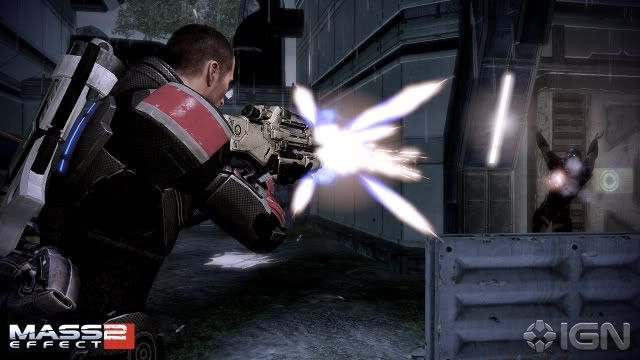
The early part of this DLC mission is something I really enjoyed. I’m a fan of stealth gameplay, and being able to circumvent, mitigate or barely avoid combat is an experience I can’t help but enjoy. So when I heard that at least part of this mission featured Shepard alone, slipping through the prison undetected to break Kenson out of the lockup, I was eager to play it. While there were no cardboard boxes or many clever guard-distracting tricks to speak of, avoiding sight lines and overhearing conversations still had me smiling.
After that it’s a string of familiar combat encounters, a wickedly poised decision Shepard has to make, and one of the biggest letdowns in Mass Effect history. Up until the very end of Arrival, the Reaper known as Harbinger was an aloof, implacable and cunning villain. As opposed to Sovereign’s blatant notion that Reapers are too unfathomable for puny, fleshy mortals to understand, Harbinger played its cards close to its metallic vest, working through intermediaries and seeking out Shepard directly through its Collector catspaws. That image was ruined by Arrival, when Harbinger appears to Shepard to dump an all-too-familiar “NOTHING CAN STOP US NOW” line of conversation on the long-suffering Commander. Somebody at BioWare needs to learn that villains only remain cool and interesting when they keep their big mouths shut. Only the arrival of Admiral Hackett himself in the epilogue, setting up the interesting circumstances for Mass Effect 3‘s opening, save this DLC from being a big letdown at the very end.
All in all, the DLC packs weren’t anything terrific, but each has its good points. Overlord’s creepiness and harrowing final boss fight coupled with Arrival’s stealth option made them worth the investment, and wet my whistle for Mass Effect 3.
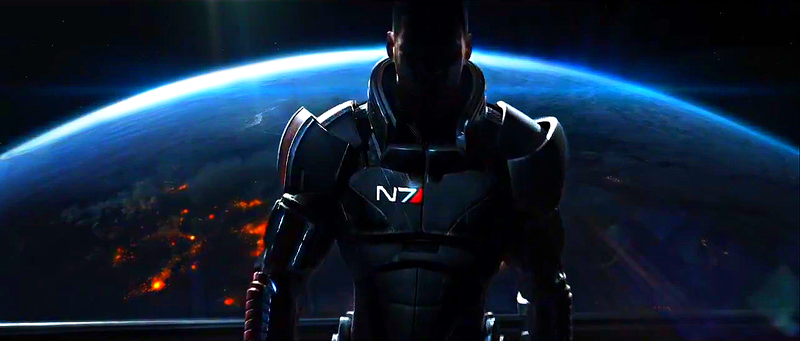 Courtesy American Superman of DeviantArt
Courtesy American Superman of DeviantArtWe’re waiting for you, Reapers. Bring it.

